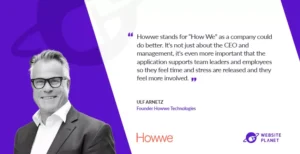After reading the previous post, you know that you first need insight, followed by a decision. The next step in the process is to create a plan to accomplish the work — the acceleration plan. We will outline how to create one and what it should contain. We will also outline what is needed in order to create this plan in a much shorter time than you are used to.
Who is involved in creating the strategy and the acceleration plan?
It is the management group (or the equivalent) that is responsible for creating both the strategy and the acceleration plan. Frequently the company board is also involved in this work.
If you already have a good strategy there is no need to spend time creating a new one. Focus on accelerating the existing plan.
If you do not have a strategy or you have one that is no good, you need to create a new one. It should be mentioned that this is work that is very close to the heart of the company. We see a lot of companies involving external partners to create the strategy. This is a big mistake. The moment you do that, you lose ownership of and engagement with both the process and the execution itself. No one but the CEO (or equivalent) and the management group (or equivalent) can lead this work.
However, you can involve an external partner to help facilitate, create good analyses and drive the process, but do not ever lose ownership.

Allocate time and create a plan for the work!
Creating a new strategy requires a lot of work. To succeed, this must be done in a structured way. Create a plan where you allocate time in the schedule for workshops and meetings. It may sound a bit elementary, but if you do not block off time, there will be fires to put out and operational tasks that will postpone the strategy execution. The creation of the plan should not take more than 2-3 months. With a high tempo, you keep the focus and increase the chances of accelerating the strategy and reaching your goals within a year.
What should an acceleration plan contain?
The plan consists of a tangible document describing the strategy. These documents can look different. We have seen all kinds of varieties over the years and the style is not important. What is important is the content. Make sure the document is not too heavy and that it is easy to understand.
Too many of these documents have a tendency to become too extensive. No one has the energy to read through or understand a 200-page document. We have seen really well-formulated strategy documents of 10-20 pages. Here’s what a good acceleration plan should include.
Contents of acceleration plan:
- Why are we accelerating our strategy?
A prerequisite for succeeding with this work is that management has a shared view of why the strategy should be executed. In addition, the whole organization has to understand why it is time for a positive change.
- What happens if we do nothing?
A clear explanation of what happens if we do nothing and work continues as usual.
- What are our vision and goal?
Describe the overall goal or vision. You need to answer the questions: how will things work when the process is done and what does the future look like. Does the company have a clearly stated vision? Show how the strategy will contribute to it.
- What are our Most Important Goals (MIGs) and the first two Key Activities?
Many confuse goals with initiatives. It is not enough to set financial goals, for example increasing sales from $200M to $400M in three years, and profit from $30M to $70M. You need to determine the two most important initiatives to achieve parts of the goals. Following these first two initiatives, you will later decide on initiatives 3, 4, etc., thus achieving your goal of increased sales from $200M to $400M and profits from $30M to $70M within 3 years.
Instead of executing all improvement initiatives at one time, you start by focusing on two initiatives. These two initiatives should be the ones you assess adding the most value (measured in money). For example 1) reduced company costs and 2) increased sales for a specific product. This is probably the most difficult part of the acceleration plan—to agree on the two most important initiatives upon which the whole strategy execution will be based upon. This must be discussed and agreed upon within the management group, but the journey there can be difficult. Each one in the management group represents their own functions/departments, and opinions of what is most important will surely differ. To untie this knot the trick is to agree on how to correctly prioritize: what gives the most value goes at the top of the priority list. When there is agreement on the two most important initiatives to start, you set the goals (MIG’s). An initiative must be describable, i.e. overall ”What and How”. For example, an initiative could be 1 – ”we will work with efficiency in all departments and become better at following Best Practice”. When we agree on that initiative, we set the goal (ME). A MIG must be measurable in money and be timed, for example, that we will reduce costs from $14M per month to $13.5M per month in the coming years.
An initiative could also be that we should increase sales for a certain product group by better integrating digital marketing and sales (for the current product group). For example, MIG may be that we will increase sales for the current product group from $75M to $150M within 24 months.
To succeed you cannot, under any circumstances, do a trade-off by agreeing on more than two initiatives and MIGs. You can possibly have a list of which MIG comes as number three and four—after MIG one and two are decided. However, our experience is that the MIGs that are planned as number three and four have become irrelevant when it is time to initiate them. We strongly recommend not even spending time on planning too far ahead. It is simply a waste of valuable time.
Why is it so important that management decisions and focuses on the most important goals (MIGs)? Management’s most important task is to make decisions, steer and follow up on the strategy acceleration. If management is unable to create focus and prioritize correctly i.e. starts to focus on more than two MIGs—both the time and cost of the strategy execution will at least double. The risk for a complete failure increases exponentially. It is a heavy but very clear responsibility that rests on management.
- Financial budget
The plan must contain a budget with a clear monetary goal as well as a time frame for reaching the goal. For example, we will increase our revenue from $300M to $400M between date X and date Y.
- Change Analysis; What changes will this entail?
In our experience, most new strategies involve some kind of change in the organization’s daily work processes. To increase sales, you need a new way of executing sales, a new IT system demands new ways of working and a new organization demands new roles and ways to collaborate. How big of a change depends on how large the difference is between your current and future situation and how much this will impact the individuals who will execute the change. Most changes are made by people.
Essentially, it is new behaviors and the ability to adjust to new situations that will decide whether the process will be successful and create a positive feeling within the organization. We cannot emphasize enough the importance of always making sure you have the employees on board on this journey. Without their engagement, the change will lead to great resistance. On the positive side, human engagement can move mountains.
It is always advisable to be well-prepared for this type of issue. This means you will not be taken by surprise when the questions and concerns emerge. Analyze to understand how big the change will be for all involved. How will it affect everyone? Being well-informed and up-to-date reduces worry and doubt.
CHANGE ANALYSIS
A simple checklist
Ask yourself these questions before a strategy execution.
- Describe current situation
- Describe the future situation
- What change is needed to reach the goals?
- Who will be affected by the change?
- How will they be affected?
After answering these questions you will have a good idea of what the change will consist of and what behaviors need to change. From there you can assess the activities needed to drive this change.
- What challenges do we have?
Awareness is raised of what you see as the main challenges are to succeed with the strategy.
- Plan and decision for how the acceleration will be executed
We have previously described how many companies fail because they lack a clear view of how the strategy will be executed. It is therefore vitally important that during the planning stages management has a clear idea of how the work will be organized, steered and progress measured. A mandate from management must exist that everyone involved in the organization is allowed to—and must!— allocate ten percent of their time for strategy work. We even recommend that you, within the strategy plan, decide on a fixed day or date for the acceleration meetings to take place (these meetings will be described in a later blog post).In addition, there must be a plan for how the organization will have the vigor to continue the process. The commitment needs to remain strong and not fade along the way (also something we will dig into in a future blog post).
- Plan for anchoring the strategy within the organization
The anchoring work will be described in the acceleration plan. What meetings need to be held? Who needs to attend? (Continue reading the blog post and stay tuned for a post about how this can be done).
Summary
People need concrete and clear information of the direction and what the goals are, in order to feel motivated and committed to begin the work. When everything is in place wonders can happen— goal-oriented work, with a large number of people involved, is strong, sustainable, and enjoyable. A well-planned strategy builds a strong foundation for things to go according to plan and creates an enjoyable process. There is obviously a reality that is constantly challenging, but if we know what the direction is we are less likely to run out of steam. When you create the conditions for your collaborators to know what that direction is, you take responsibility and show strong leadership. We promise that if you include all these parts in your plan, you truly agree on the two most important initiatives and you have set the goals (MIGs), you will have created the absolute best conditions for the next important phase: the anchoring. Determine the financial goals for the acceleration plan, for example, that sales will increase from $200M to $400M, and profits will increase from $30M to $70M within 3 years.
Determine the two first and most important initiatives to achieve some of these goals. It should be possible to explain overall what and how for these initiatives, such as lowering costs through increased efficiency and that more people follow Best Practice established for each department. For example, a MIG for this initiative will be to reduce costs from $14 M to $13.5M per month within 12 months. Another initiative could be to increase sales of a specific product area through increased integration between sales and digital marketing for this particular product area. For example, MIG for this initiative may be to increase sales for this product area from $75M to $150M within two years. When you have started with practical improvement, i.e. the most important activities and obtained acceleration, you decide initiatives 3, 4, and so on.
Thus, more than two initiatives are needed to achieve the financial goals of + $200M in increased sales and + $40M profit within three years.
This is a proactive approach, i.e. the company will always have “the two most important strategic initiatives” that everyone focuses on for the company to accelerate.
What are you waiting for?
Howwe is the Solution for Growth.
With our method and software, we simplify the execution of your strategy.





